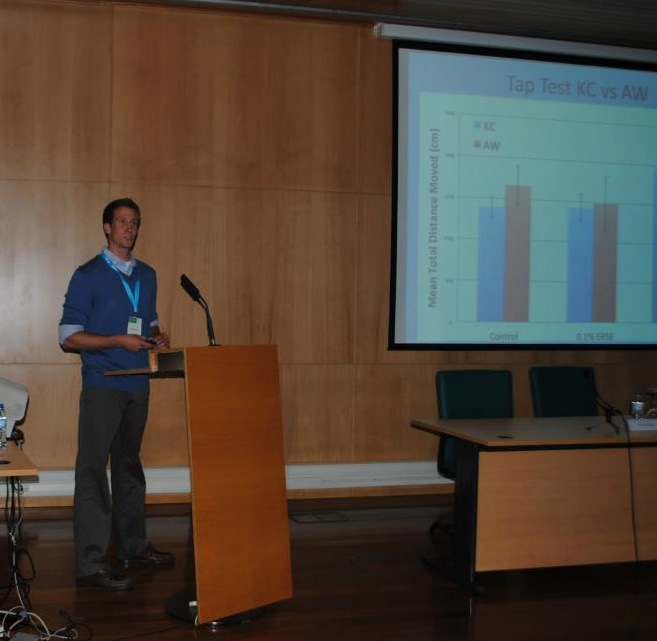
By Lauren Donoghue
While they may be tiny – microscopic, even – the little worms I’ve been working with this summer have been a wide window into the world of research and graduate school. While they may only have a slight yellow tinge to their translucent bodies – these little worms have shown me that research brings a bright and rich community of people with personal talents, motivations, and stories. And while they may be organ-less, these little worms are powerful tools to study the complex operations of mitochondria relevant to environmental exposures, human mitochondrial disease, and DNA integrity.
My summer at the Superfund Center was spent in the Meyer lab, which collaborates across the Duke Superfund Center on Project 3: PAH Exposures and Development. Instead of looking directly at killifish from the Atlantic Wood Industries, Inc. Superfund site like in Dr. Di Giulio’s lab, the Meyer lab contributes by exploring the role of mitochondrial DNA damage from PAH exposures during development in the context of later life consequences. In other words, if mitochondrial DNA is damaged during development, how is the organism affected when it’s older?
When I was first introduced to the lab, I was told about how C. elegans are great model organisms for studying mitochondrial DNA damage and maintenance, but didn’t really understand how useful they are until I started my own projects. Unlike cells, C. elegans are capable of giving us insight on mitochondrial function (producing energy, cell communication, and cell growth, just to name a few) by allowing measurements of development and oxygen consumption; unlike other model organisms, C. elegans have transparent development, grow and reproduce rapidly, and have fully mapped nuclear and mitochondrial genomes (that –believe it or not—are fairly similar to humans!).
Alongside many other students and postdocs in Dr. Meyer’s flourishing lab, I took my crack at a small piece of the puzzling questions surrounding mitochondrial DNA damage by looking at how superoxide dismutase, which many organisms (from worms to humans) have to protect our cells from oxidative stress, affects development when there is mitochondrial DNA damage. This is the same concept behind why we are told to eat foods with lots of antioxidants. Mitochondrial DNA damage is of specific importance because unlike the nuclear DNA that we usually think of, mitochondria do not have as thorough of abilities to repair their damaged DNA. Damaged mitochondrial DNA is a concern because it can lead to decreased lifespan, neurodegeneration, and altered physical ability. What is not fully known, however, is the process by which damaged DNA results in these altered phenotypes, or physical qualities like decreased oxygen consumption later in life. Are there proteins that aren’t being made? Is there oxidative damage harming cell components? How much of their DNA is damaged? Understanding more about mitochondrial function is important not only for assessing the risks of environmental exposures, but may also be relevant to individuals with rare, but possibly severe mitochondrial diseases (a topic under-studied).
Through my internship this summer, I’ve widened my understanding of toxicology and good lab technique. The most significant gain I will take away from this summer, however, is a better understanding of academia and graduate school. Through interacting with the students in the Superfund Center labs, I am now more confident that I can chose a graduate program that will be right for me and excel in it. My research this summer has taught me patience and how to be satisfied with your work. In learning about all the work in the Superfund Center, I’ve also learned how exciting and open research is as a future. I am also grateful to be extending my time in the Meyer lab this fall as I complete my honors thesis for UNC (where I will be a senior) with this research.





